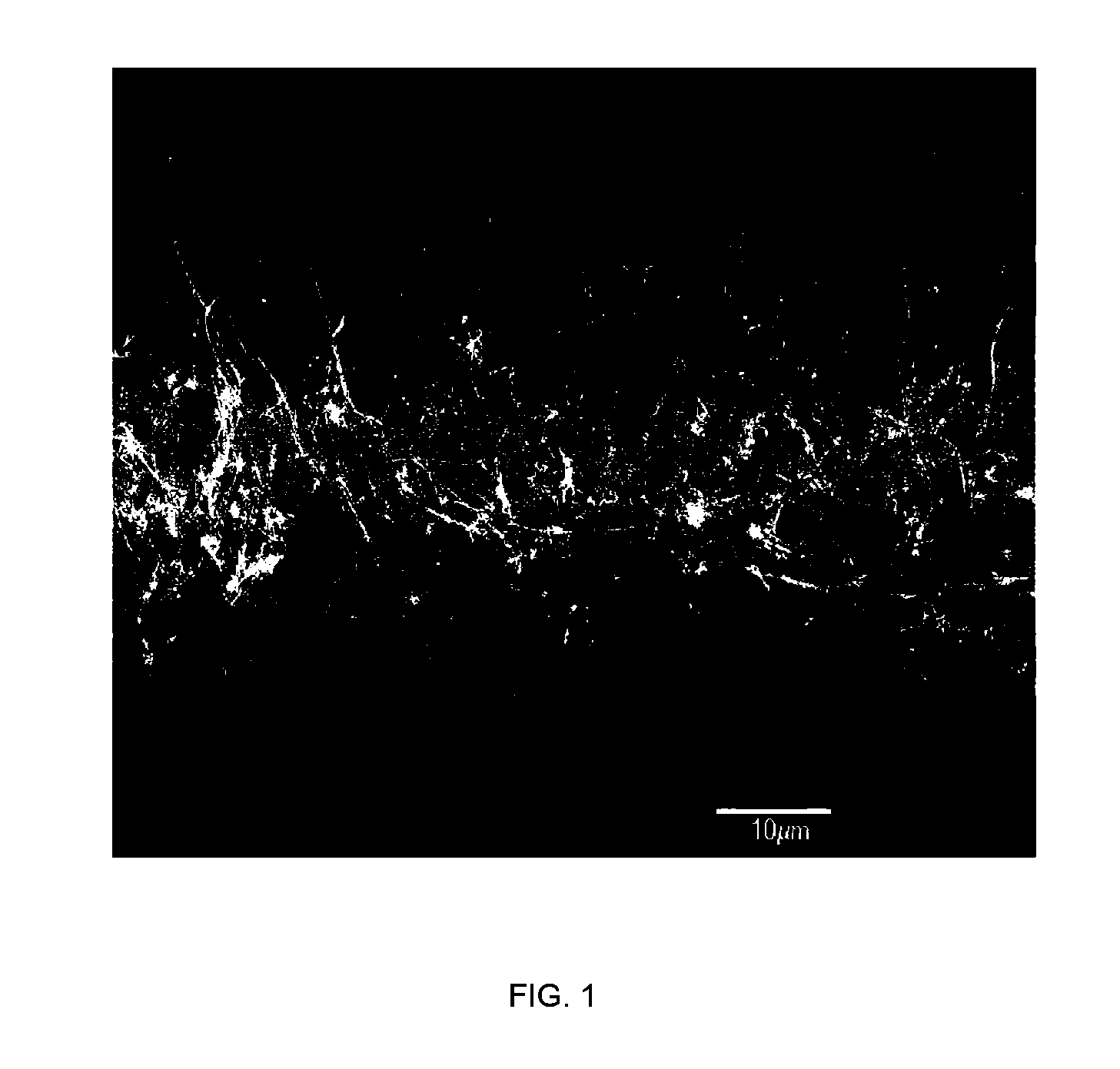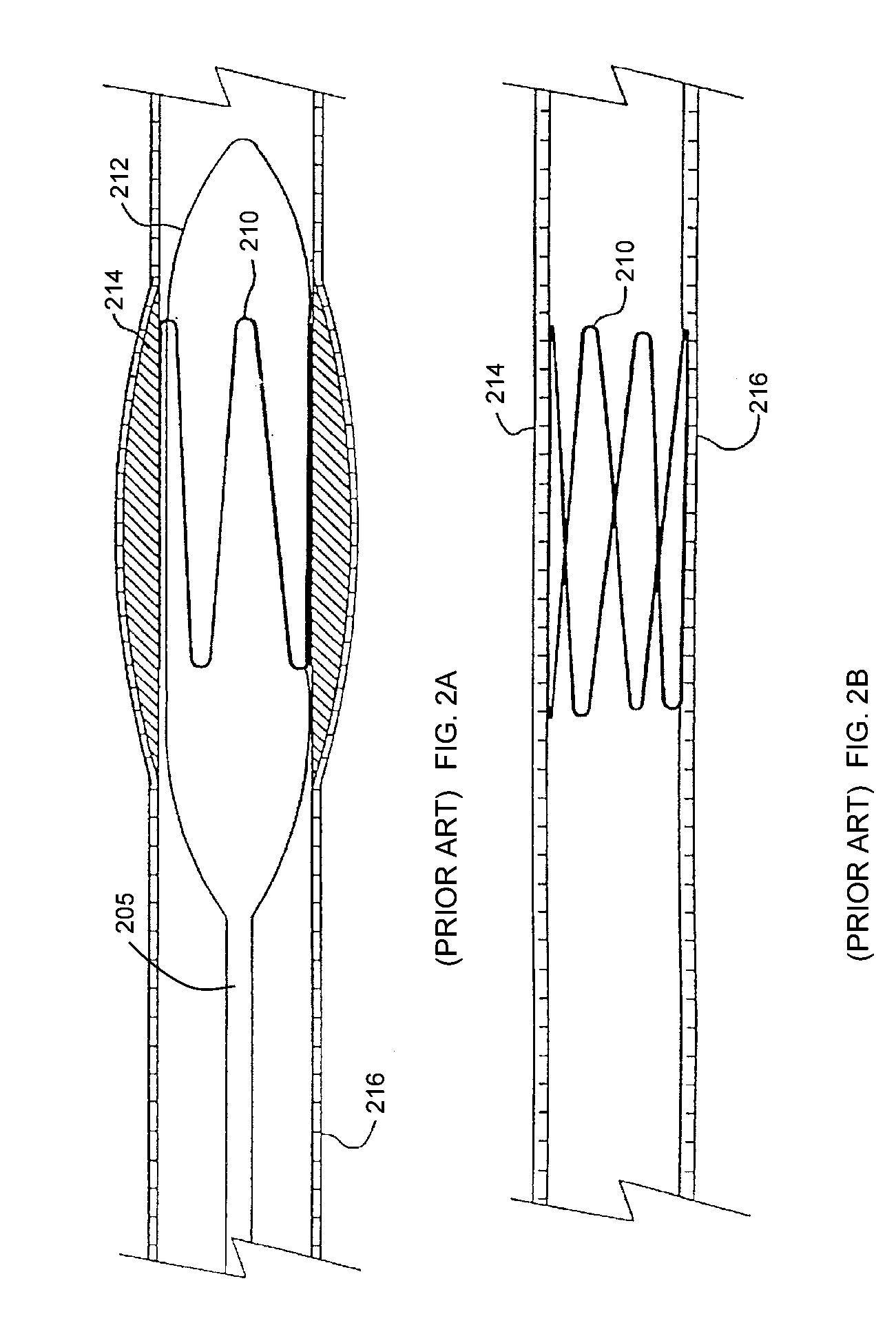Medical device applications of nanostructured surfaces
a nano-structured surface and medical device technology, applied in the field of nanotechnology, can solve the problems of long hospital stay, or even death, bacterial and other microbial infection remains a serious issue in the use of medical implants, and is resistant to the innate immune system, so as to improve the surface, prevent/reduce bio-fouling, and increase the fluid flow
- Summary
- Abstract
- Description
- Claims
- Application Information
AI Technical Summary
Benefits of technology
Problems solved by technology
Method used
Image
Examples
example i
i) Osteoblast Culture
[0392]Human fetal osteoblasts, designated hFOB 1.19 (American Type Culture Collection (ATCC), Manassas, Va.), were used for cell adhesion studies. This cell line was obtained from a spontaneous miscarriage and transfected with a temperature-sensitive mutant gene of SV40 large T antigen. The cells were programmed to proliferate at 34° C. and differentiate only when the temperature is raised to 39° C. Cells with passage 10 were used in all experiments. The medium used for growing osteoblasts consisted of 1:1 ratio of DMEM:F12 (Invitrogen Corp.) with 10% fetal bovine serum (Sigma-Aldrich) and 0.3 mg / mL of G418 sulfate powder (ATCC). The medium was changed every 2-3 days, and the subculture was done at a ratio of 1:4.
ii) Osteoblast Seeding
[0393]Different nanowire surfaces along with control (reference) surfaces (e.g., quartz) were placed in wells of 12-well plates and were placed under ultraviolet lights in a biological hood for 24 hours. They were then soaked in 70...
example ii
i) Materials and Methods
[0402]Each cell type was obtained from rats and was used as primary cells (used directly after isolation). Cells were seeded simultaneously at 3,500 cell / cm2 onto the materials and were cultured under standard conditions for 4 hours. The nanowire surfaces used in this study were prepared by growing nanowires from 40 nm gold colloids deposited onto poly-1-lysine coated titanium coupons (1 cm2) (Alfa Aesar, Ward Hill, Mass.) for 30 minutes at 480° C. The final grown nanowires were approximately 5-20 um long and 40 nm in diameter. Each cell type was fluorescently stained prior to seeding to assist in distinguishing each cell type after the adhesion experiment. After 4 hours, cells were then fixed and counted. Each experiment was done in triplicate and repeated at three separate times for statistical significance.
ii) Results and Discussion
[0403]The results of this competitive adhesion assay showed significantly more competitive adhesion after 1 day (FIG. 13A) and...
example iii
Synthesis of Nanowires on Nitinol Substrate
[0404]Following removal of organic residue from the Nitinol substrate surface (e.g., the surface is plasma cleaned with oxygen to remove any organics on the surface), the substrate is then placed in a CVD furnace in which it undergoes an approximate 30 minute run at approximately 480° C. to give a 6 to 10 nanometer conformal layer of microcrystalline silicon. The silicon coated material is then coated with an organic, chemical solution such as polylysine to ensure that the silicon surface is positively charged so that the gold colloid will adhere to the silicon coated surface. After the polylysine has been coated to the silicon coated surface, a liquid solution of gold colloid is deposited on the substrate for use as a catalyst within the subsequent chemical vapor deposition step. Selection of the colloid diameter is chosen based on the desired wire diameter size. The negatively charged gold colloid adheres to the positively charged surface...
PUM
| Property | Measurement | Unit |
|---|---|---|
| average length | aaaaa | aaaaa |
| average diameter | aaaaa | aaaaa |
| thickness | aaaaa | aaaaa |
Abstract
Description
Claims
Application Information
 Login to View More
Login to View More - R&D
- Intellectual Property
- Life Sciences
- Materials
- Tech Scout
- Unparalleled Data Quality
- Higher Quality Content
- 60% Fewer Hallucinations
Browse by: Latest US Patents, China's latest patents, Technical Efficacy Thesaurus, Application Domain, Technology Topic, Popular Technical Reports.
© 2025 PatSnap. All rights reserved.Legal|Privacy policy|Modern Slavery Act Transparency Statement|Sitemap|About US| Contact US: help@patsnap.com



